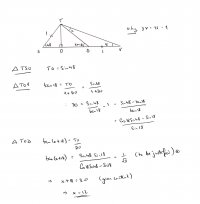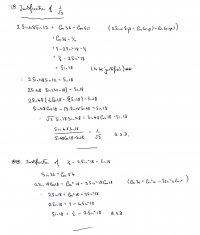Dr.Peterson
Elite Member
- Joined
- Nov 12, 2017
- Messages
- 16,861
Getting the exact values from WolframAlpha (knowing I could have worked them out myself if I had the time), I find
Given these, it's not hard to show that (sin(12)sin(48))^2 = (sin(18)sin(30))^2 = (3 - sqrt(5))/32. This is equivalent to the equation we got from the law of sines. So we've proved that the exact answer is 12.
As to whether one could ever figure this out without first "guessing" that the answer is exactly 12 degrees, I have no idea!
I still want to see the exact wording of the original problem.
sin(12) = 1/4 sqrt(7 - sqrt(5) - sqrt(6 (5 - sqrt(5))))
sin(48) = 1/4 sqrt(7 - sqrt(5) + sqrt(6 (5 - sqrt(5))))
sin(18) = 1/4 (sqrt(5) - 1)
sin(30) = 1/2, of course
Given these, it's not hard to show that (sin(12)sin(48))^2 = (sin(18)sin(30))^2 = (3 - sqrt(5))/32. This is equivalent to the equation we got from the law of sines. So we've proved that the exact answer is 12.
As to whether one could ever figure this out without first "guessing" that the answer is exactly 12 degrees, I have no idea!
I still want to see the exact wording of the original problem.




